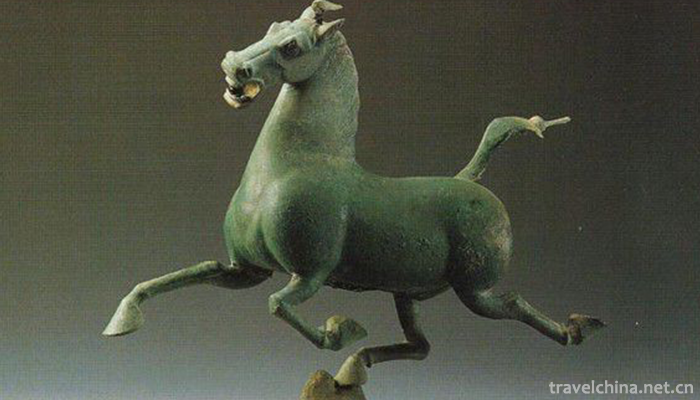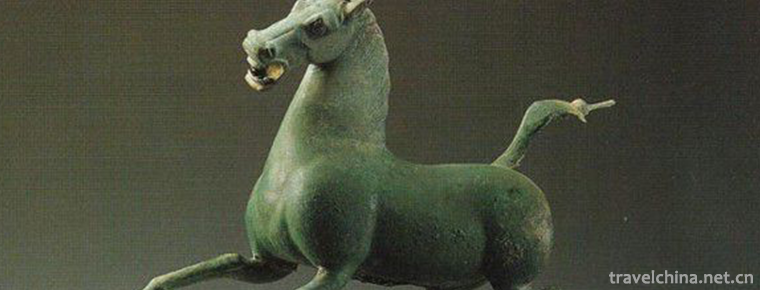Bronze Repair and Reproduction Techniques
Bronze Repair and Reproduction Techniques
Bronze restoration and reproduction skills, the traditional skills of Beijing Palace Museum, one of the national intangible cultural heritage.
Traditional bronze repair technology mainly includes shaping, splicing, matching, bonding (welding), strengthening, old and other processes, and sometimes involves rust removal, scalding (surface sealing) and other work. Reproduction technology includes mold making, die casting, carving patterns, grinding and old processes.
In 2011, the bronze restoration and reproduction technology was announced by the State Council of the People's Republic of China as the third batch of national intangible cultural heritage list, heritage number_-197.
historical origin
The repair technology of Chinese bronzes has a long history. It should be said that once the bronze ware came out, there were corresponding repair technologies.
During the Spring and Autumn Period and the Warring States Period, there was a story about the fake tripod: "Qi Valu Soo Ding, Lu fake it, Qi people fake it day by day, Lu people fake it day by day,..." (Han Feizi) It can be proved that there was a theory of forgery of bronzes in the Spring and Autumn Period and the Warring States Period.
In Song Dynasty, there was the saying of "Zhaoxin Song Dynasty's wares": "Upper imitation worships the ancients, lower forgery for profit", which showed that there were also examples of imitation and forgery in Song Dynasty.
The development of foundry reproduction and other processes is closely related to the restoration technology. With the development of these handicraft technologies and their application in the preservation of antique appreciation collection, the restoration technology began to emerge.
Modern repair technology from the government to society, after a long period of practice and development, formed a unique expertise, a complete comprehensive technical system.
In 1952, a bronze restoration expert headed by Zhao Zhenmao of Beijing School entered the Palace Museum and began to use traditional techniques to repair and reproduce bronze artifacts. These experts also include Zhao Tongren, Li Huisheng, Meng Haiquan and Jingdequan, Gu Dewang and Zhang Juru, who have been engaged in bronze restoration and reproduction for a long time. For decades, these experts have repaired and duplicated thousands of bronze artifacts.
Technological characteristics
Bronze repair and reproduction techniques, whether splicing fragments, engraving patterns, inscriptions, whether making varnish floor, spraying, spot rusting, whether gold or silver mistakes, have formed a relatively perfect set of traditional crafts.
Bronze repair and reproduction technology is a rigorous scientific process. According to different shapes and degree of damage, the welding methods used are different and sometimes used alternately. However, we must follow the principle of repairing the old as before and not destroying the original objects as far as possible.
Inheritance and Protection
Inheritance value
Ancient Chinese bronzes are historical relics of thousands of years ago. After underground storage, they were corroded and destroyed by nature. The unearthed bronzes are often broken and incomplete. Therefore, most of the bronzes have undergone a lot of restoration work in order to facilitate their long-term preservation and better play their historical, artistic and scientific value.
A complete process of cultural relics restoration itself is also an important research work. Studying the characteristics of the times, plastic arts and foundry technology of artifacts has become an important reference for modern foundry technology. Therefore, the restoration work is an important and meaningful work.
Current situation of inheritance
Professionals engaged in the restoration of traditional bronzes are aging, and further inheritance is facing difficulties. Under the background of the rapid development of modern science and technology, it is imperative to make a scientific summary of the traditional crafts, including the traditional bronze restoration and reproduction technology.
Heritage figures
Wang Youliang, male, Han nationality, born in April 1964 in Beijing. In December 2012, Wang Youliang was selected as the representative successor of the fourth batch of national intangible cultural heritage projects, declared by the Palace Museum.
protective measures
In 1952, Zhao Zhenmao, the third generation heir of the traditional bronze restoration technology "Ancient Bronze Zhang School", came to the Palace Museum and brought back the bronze restoration skills. The Imperial Palace Museum has trained a group of experts who have mastered the traditional repair and reproduction technology through the "teacher-in-charge system". It has successively restored a large number of national treasure-grade cultural relics, including Lihe Fangju and Ma Ta Feiyan.
social influence
Exhibition activities
Zhou's Bangui is an important cultural relic with high historic and academic value found in Beijing. It has a unique style after the restoration by Zhao Zhenmao, a master of bronze restoration. Mr. Guo Moruo wrote "Bangui Discovery" after seeing him, and was later filmed as a documentary "Don't let the treasures sink again", which shows Zhao Zhenmao's superb repair skills.
Beginning with Zhao Zhenmao, the Bronze Ware Room of the Ministry of Science and Technology of the Palace Museum has restored a large number of bronze heavy artifacts and important cultural relics in the Palace Museum and museums all over the country, including Bangong, Qi Shizu Xinfu, Simu Xinding, Second Sacrifice Shao Qitao, Ma Ta Feiyan and a large number of national treasure cultural relics. It has reproduced lotus crane square pots, Gebogu, animal face pattern, gourd, heir ancestor Xintao, Niuzun of the Western Zhou Dynasty, Xizhou Dynasty, and Xizhou Dynasty. Ronggui and other important cultural relics.
Repair cases
In the 1970s, the heir Zhao Zhenmao and his disciple Cao Jinglou copied the lotus crane square pot.
In 2005, the successor, Lu Tuanjie, duplicated Bangui of the Western Zhou Dynasty for the Capital Museum.
In 2006, Wang Wusheng, the successor, repaired the Shengding Ding unearthed in Shangcai, Henan Province.
In 2007, successors Wang Youliang, Lu Tuanjie, Zheng Kun and Gaofei repaired the Tongjian of Silonger in Spring and Autumn Period.


-
1.Old Summer PalaceYuanmingyuan
No. 28 Qinghua West Road, Haidian District, Beijing, China
Time 2018-10-03 -
2.Dayi Liushi Manorial Museum
Dayi Liu Manor Museum, located at No. 15 Jingui Street, Anren Town, Dayi County, Chengdu City, Sichuan Province, is one of the most important historical sites and representative buildings in modern Ch
Time 2018-12-26 -
3.Jinan International Park Expo
Jinan International Park Expo Park covers an area of 5176 Mu and is located in Jinan University Science Park. The Lake area is 1440 mu. It is the largest land park in China
Time 2019-01-21 -
4.Jinshuitai Hot Spring Scenic Area
Jinshuitai Hot Spring is a hot spring resort built according to the national AAAA scenic standard. It is located in Shuitai Town, Xinxing County, Guangdong Province
Time 2019-01-27 -
5.Lianhua Rural Tourist Area
Lianhua Rural Tourist Area is a national AAAA-level tourist area, located in the northeast of Chenghai District, Shantou City, with Dongli Town in the East and Tiepu Town in Chaozhou City in the west
Time 2019-01-29 -
6.Zhushan National Forest Park
Zhushan National Forest Park is located in Liuhua Po Street Office in the west of Qingdao Development Zone. It is a national forest park approved by the State Forestry Administration in December 2000
Time 2019-03-21 -
7.Eight treasures duck
Babao duck is a characteristic traditional dish in Suzhou, which belongs to Shanghai cuisine and Su cuisine. But it is best cooked by the old restaurant in Shanghai, Town God's Temple
Time 2019-03-27 -
8.Hangzhou Reviews
Hangzhou commentary originated from the Southern Song Dynasty, and has a history of 800 years. It is the most characteristic local traditional folk art in Hangzhou, Zhejiang Province.
Time 2019-05-02 -
9.Pulangorgozi
Pulangorgozi, also known as "fruit harmony", is a kind of self-entertaining dance, which originates from Pulan County and is widely spread in Ali countryside. It is a kind of hand in hand, s
Time 2019-06-09 -
10.Shuizu Duanwu Jie
The aquarium duanjie is called "borrowing duanjie" in the language of water. "Duan" means "the first year of life" or "New Year", "borrow" means "
Time 2019-06-16 -
11.The Lantern Festival
Lantern Festival, also known as the Lantern Festival, the Little January Festival, the Lantern Festival or the Lantern Festival, is one of the traditional festivals in China. The first month is the fi
Time 2019-07-16 -
12.History of Guangan
Guang'an belonged to Liangzhou in ancient times and Yongzhou in Yin and Shang Dynasties. In the fifth year of King Shenliang of Zhou Dynasty (316 BC), Qin destroyed Bashu and established Ba and Shu counties. Today, Guang'an District, Qianfeng District, Linsh
Time 2020-12-19